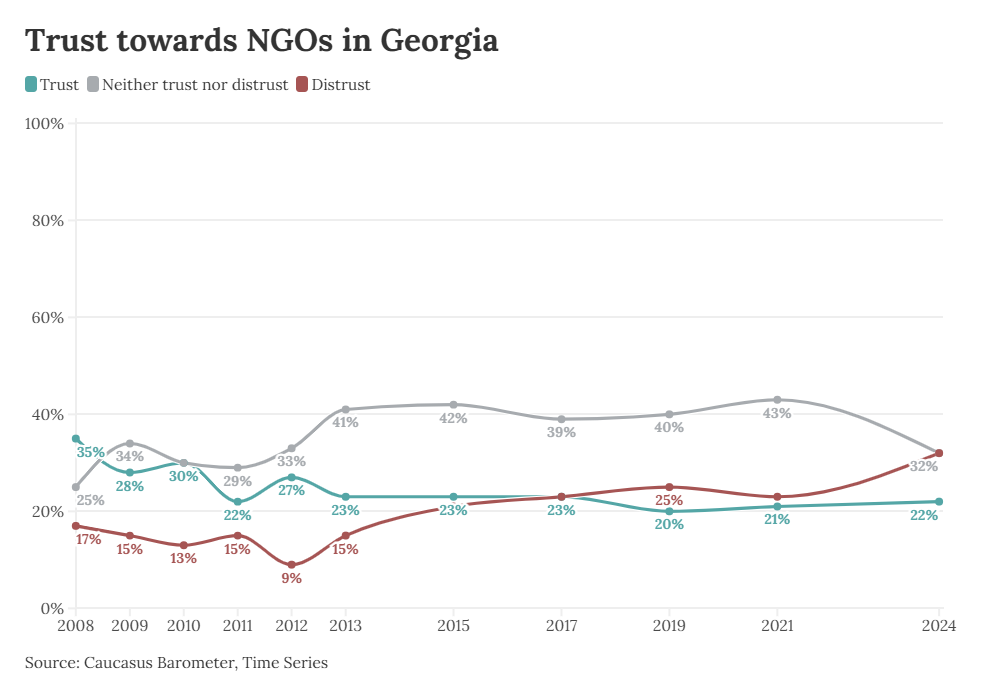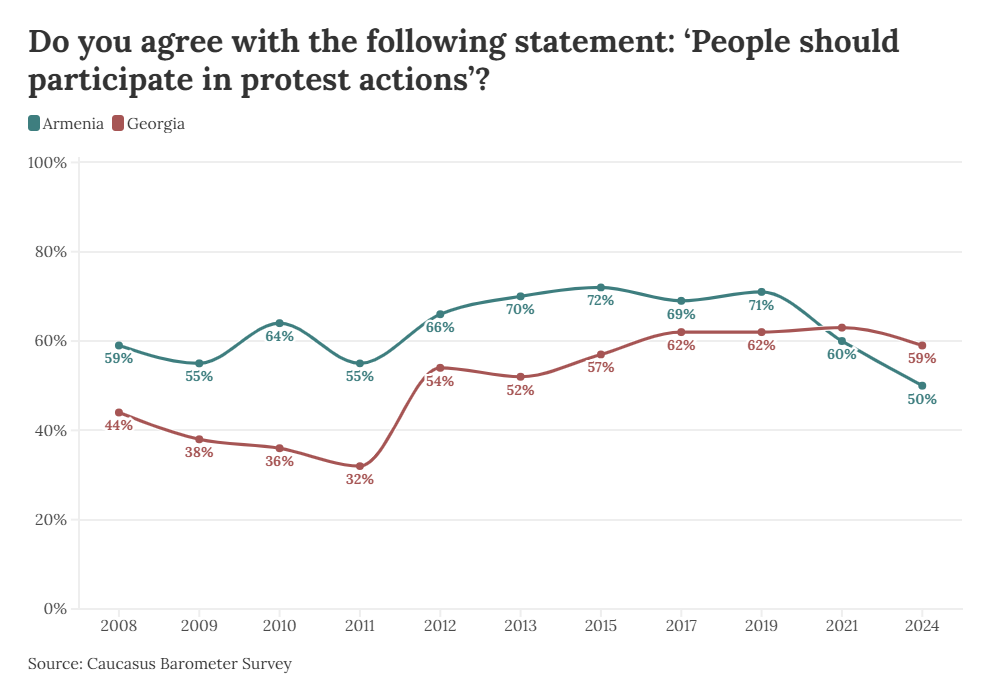People in Tbilisi often talk about the growing number of vehicles and problems associated with them. According to NDI and CRRC public opinion surveys, every third Tbilisi resident considers traffic, every fifth parking, and every other pollution among the most important public goods related issues in the city. These issues clearly relate to the cars on Tbilisi streets. Yet, a basic fact that could help inform policy to address these issues – how many cars drive on Tbilisi’s streets – is unknown, with different data sources indicating sharply different estimates.
The Ministry of Internal Affairs (MIA) is responsible for car registration and maintains a database of registered vehicles in the country. The number of registered vehicles are available from the MIA in annual reports and monthly updated lists of vehicles that have valid registration status. The official data suggests that at the moment there are 494,627 vehicles registered in Tbilisi. Excluding agricultural vehicles, specialized vehicles, non-motorized trailers, and two-wheeled vehicles, as some international reports do, suggests there are 462,922 light vehicles, trucks, vans and buses registered in Tbilisi. This is equivalent to 395 vehicles per 1000 residents.
While these numbers are informative, what they really say is how many vehicles are actively registered rather than driving on Tbilisi’s streets. These numbers likely differ, because the registered vehicle list includes cars that are no longer working, but still have valid registration status. These cars are not removed from the vehicle registry, because there is rarely an incentive to do so for the owner such as registration fees or fines for failing to remove the car from the registry. The exceptions to this are when inactive cars are sold for scrap or for export, because the people purchasing the vehicle often request that the owner remove it from the registry. Given this situation, it is reasonable to believe that the actual number of vehicles driven in the city is lower than the official number of registered vehicles.
Estimating the number of cars
To estimate the number of vehicles driven in the city, the following assumptions are used:
- Only light vehicles, trucks, vans, and buses are included in the data analysis. Agricultural vehicles, specialized vehicles, non-motorized trailers, and two-wheeled vehicles are excluded from the data analysis, though they are provided in the MIA data. Aside from international practice, this generally makes sense: agricultural vehicles are on the streets relatively rarely compared to cars and vans. Generally two-wheeled vehicles are not considered due to their lighter impact given their lighter size and parking space needed.
- The analysis assumes all registered vehicles under corporate ownership are in working condition and in use, while only some individually owned vehicles are. The rationale behind this is that corporate owners (both state and private) have stronger incentives to de-register vehicles, as they appear on their balance sheets, a factor individual owners do not consider.
- The share of registered vehicles in working condition is estimated using household survey data from April-June, 2016. The analysis assumes that the share of vehicles registered and in working condition has not changed significantly.
From here, when vehicles is mentioned, it means light vehicles, buses/vans and trucks together. Otherwise, the specific group of vehicles is used (e.g. light vehicles or buses/vans and trucks). All statistics refer to Tbilisi only. When the ownership status is not specified as individual or corporate, all vehicles are included.
As noted above, there is good reason to believe that there are fewer individually owned vehicles in operation than registered in Tbilisi. Hence, survey data is used to estimate the number of individually owned vehicles in use in Tbilisi. The latest publicly available survey data comes from 2016 and is used to estimate the share of individually owned vehicles in use among all individually owned vehicles, and then based on the third assumption above, this number is used to estimate the number of vehicles in combination with 2019 official registry data.
The survey data comes from the Tbilisi Metropolitan Area Transportation Household Survey, which Systra conducted in April-June, 2016. The survey had 6,092 respondents in Tbilisi. It asked about the number of vehicles households have, the vehicle type (light car/SUV, pickup truck, van/boxcar, heavy truck, light truck, microbus or other), ownership status (owned, professional use, rented or other), and frequency of usage. Vehicles in working condition are defined as those that have driven at least one kilometer during the 12 months prior to the survey. According to the survey, there were 168,314 (+/-5,702) individually owned vehicles in use in Tbilisi in 2016.
The next step is the calculation of the share of working vehicles among individually owned registered vehicles in 2016. However, the official registry data provides information about ownership status only for 2017-2019 data, while for 2016, there are only two official statistics available: the number of light vehicles (376,962) and the number of total vehicles (440,042). Ownership status, however, is not available. Hence, to estimate the number of individually owned vehicles in 2016, this post uses the average of 2017-2019 data to estimate:
- The share of individually owned light vehicles among all registered light vehicles and;
- The share of individually owned trucks, vans, and buses among all registered vehicles.
Between 2017 and 2019, the average share of individually owned light vehicles in Tbilisi was 83%. The analysis assumes that the average share of individually owned vehicles among all vehicles did not change significantly between 2016 and 2017-2019. Under this assumption, multiplying the average share of individually owned light vehicles by the total number of registered light vehicles leads to an estimate of the total number of individually owned registered light vehicles. According to the MIA data, there were 376,962 light vehicles registered in Tbilisi in 2016. Of these, approximately 313,896 of them were individually owned based on the above estimate.
As for buses/vans and trucks, the average share of individually owned buses/vans and trucks among all vehicles in 2017-2019 was 4%, which translates to 16,780 individually owned buses/vans and trucks (from 440,042 registered vehicles in 2016). Adding the two estimates leads to an overall estimate of 330,675 individually owned, registered vehicles in 2016. By comparison, the survey data from 2016 indicates that there were 168,314 (+/-5,702) individually owned vehicles that were working in 2016. These figures taken together suggest that among registered, individually owned vehicles, 51% (+/- 1.7%, due to a survey error) are in working condition and being used.
Assuming that the share of vehicles in use is the same for individually owned vehicles and has not changed significantly in recent years, the number of individually owned light vehicles, buses/vans and trucks in Tbilisi in 2019 is approximately 186,855, out of the 367,101 registered individually owned vehicles. Assuming that all corporate vehicles are working (95,821), there are 282,676 light vehicles, trucks and buses, on the streets of Tbilisi of the 462,922 which are currently registered
Based on the above figures, there are 241 vehicles driving on Tbilisi’s streets per 1000 residents in 2019, 57% of the number that are registered in Tbilisi. The real number of vehicles in Tbilisi’s streets might still be higher than this estimate, as some vehicles are not registered in Tbilisi, but drive on its streets. At the same time, many cars registered in Tbilisi are likely to be driven outside of Tbilisi. Even taking this into account, it seems unlikely that there are so many cars that drive on Tbilisi’s streets but that are registered elsewhere that it would throw this estimate off dramatically.
Even though there are likely less cars on the road than previously thought, the problems they create are foremost in the minds of the residents of Tbilisi. In turn, the data suggests that the impact per car on the problems with parking, traffic, and pollution are larger than one might believe based on the official estimates of cars registered in Tbilisi. In turn, this suggests a clear need for policy to address the issues before they become worse.












